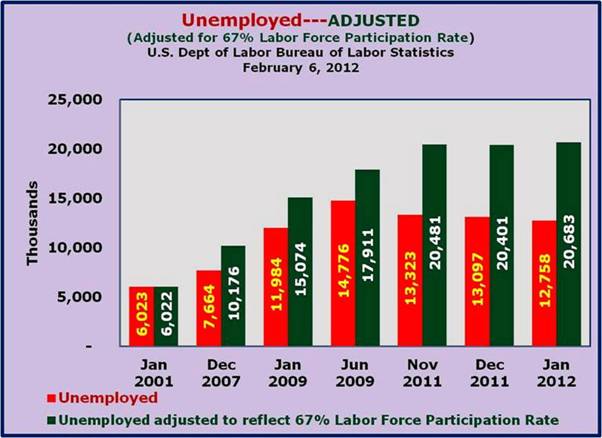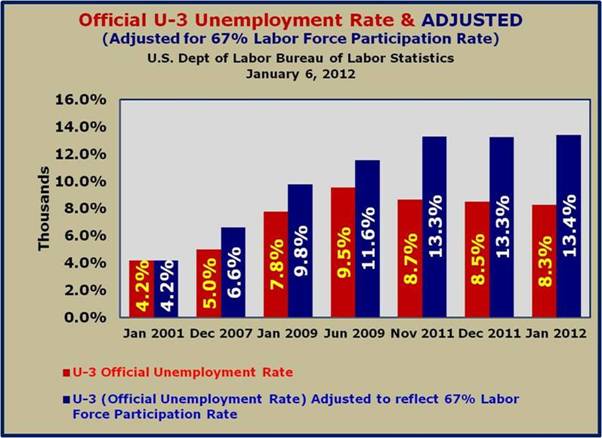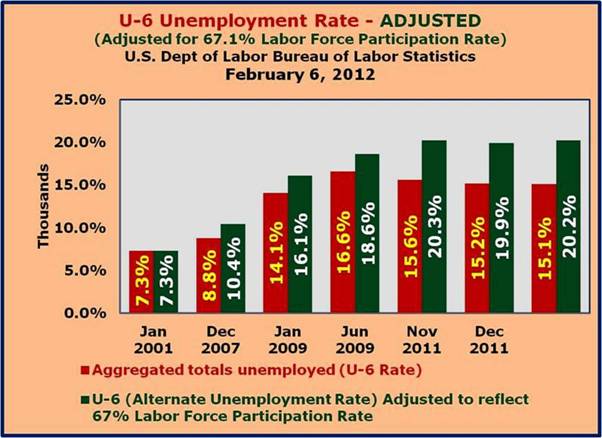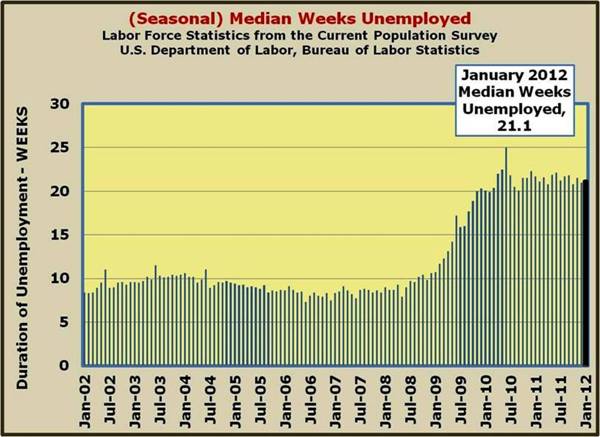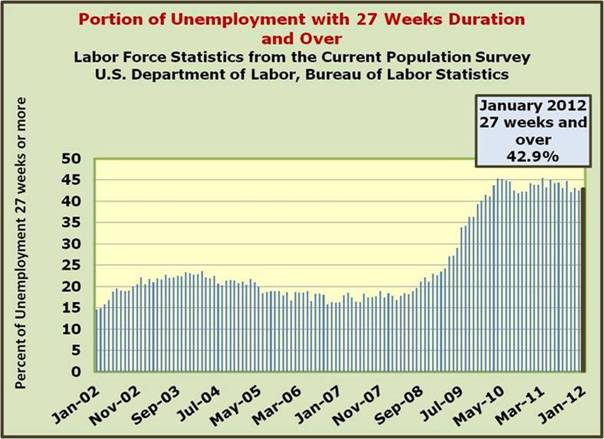February 13, 2012
For a downloadable version, click the following:
FED CHAIRMAN BEN BERNANKE: A FELLOW PESSIMIST OR JUST A FELLOW RATIONAL REALIST
We have been criticized for being overly pessimistic about what many are claiming is occurring in the U. S. economy, a slow but positive recovery with declining unemployment and rising employment. In a recent article on the website we proved this optimism to be ill founded as we examined the data from various Federal Government agencies such as the Bureau of Labor Statistics and the Census Bureau.
On February 7, 2012 before the Committee on the Budget, U.S. Senate, the Chairman of the Federal Reserve Board of Governors, Ben Bernanke, was asked why the FED wasn't moving to a policy of more restraint now that the unemployment rate was falling. He said what we have said on this website several times, the employment /unemployment picture is still grim at best. He referred to the Discouraged Workers who are not counted as being unemployed because they are defined as having opted out of the labor force by no longer working for work. The improvement in the U–3 measure clearly understates the grimness in the labor market. The U–6 measure is a better measure because of the way it treats the Discouraged Workers. That is why the U–6 measure, the more realistic one, is much higher than the sugar coated U–3 measure with which most of the media and wishful thinkers are preoccupied.
Here is what Chairman Bernanke had to say:
budget.senate.gov/democratic/index.cfm/files
Opening sentence in his remarks…
Over the past two and a half years, the U.S. economy has been gradually recovering from the recent deep recession. While conditions have certainly improved over this period, the pace of the recovery has been frustratingly slow, particularly from the perspective of the millions of workers who remain unemployed or underemployed.
And a bit later in his remarks…
Nevertheless, as shown by indicators like the rate of unemployment and the ratio of employment to population, we still have a long way to go before the labor market can be said to be operating normally. Particularly troubling is the unusually high level of long–term unemployment: More than 40 percent of the unemployed have been jobless for more than six months, roughly double the fraction during the economic expansion of the previous decade.
Watch the entire Hearing…
budget.senate.gov/democratic/index.cfm/committeehearings
Martin Crutsinger, from the Associated Press
Ben Bernanke says the job market isn&t as strong as the steadily declining unemployment rate might suggest.
Responding to questions at a Senate hearing Tuesday, he noted that the unemployment rate doesn&t capture the plight of millions of people who have stopped looking for work or part–timers who can&t find full–time jobs.
Bernanke, in the question and answer period noted:
It&s very important to look not just at the unemployment rate, which reflects only people who are actively seeking work.
There are also a lot of people who are either out of the labor force because they don&t think they can find work. ... There are also a lot of people who are working part–time, and they&d like to be working full–time but they can&t find full–time work.
As we have consistently argued, the picture looks far better than it really is because the labor force participation rate (LFPR) has been falling due to such things as the Discouraged Worker Effect. Once the unemployment rates are adjusted to a more realistic LFPR, as we have shown in more than one article on this website, the unemployment rate is not only significantly higher than reported, and has not been falling of late, but actually rising.
Lastly…
Conference Board Economists: U.S. Economy Transitioning To A New Normal
"The economy that we had before the recession is gone," said Kenneth Goldstein, economist at the Conference Board. "It&s not coming back." The U.S. economy is transitioning to a new normal in which businesses invest less and consumers spend less than before the recession, Goldstein told The Huffington Post in an interview last week. As a result, he said, economic growth and job growth will be slower than before.
Food for thought…
